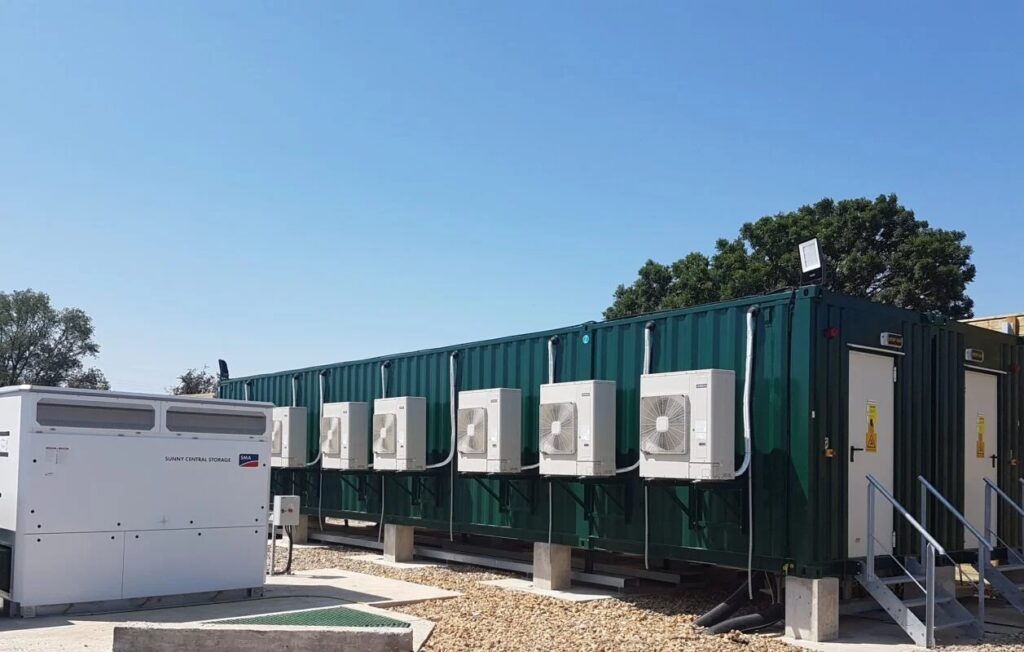
Gresham House Energy Storage Fund (GRID) expects full year operational portfolio revenues of about £42 million, as December saw better dispatch rates of batteries in the balancing mechanism (BM).
The battery energy storage system (BESS) investment fund said that for the financial year ending 31 December 2024, its operational portfolio earnings before interest, taxes, depreciation, and amortization (EBITDA) is about £29 million. This is up from £25.8 million as of the end of 2023.
Over the last year, projects of GRID’s to come online include the 50MW Elland BESS, energised on 1 November at a 2-hour duration. The site has since been commissioned, although commissioning of its 100MW Melksham BESS had to be rescheduled due to UK weather conditions. Still, GRID said the site is fully ready to energise and its team is working to shorten the commissioning phase once energisation takes place, expected later this month.
It is also progressing augmentation of the Melksham BESS that would bring it from 1-hour to the targeted 2-hour duration. In Scotland, where a compliance process is required before energisation, GRID’s Shilton Lane project is expected to complete the compliance stage in February 2025.
A recovery in the wholesale market also drove growth and December was the strongest month of 2024 for battery dispatch rates in the BM. Net revenues in July and August were 25% higher than average net revenues in H1 2024, and with the energisation of the above projects the outlook for GRID is much improved.
By comparison, in its half-year results, released at the end of September, GRID’s operational portfolio revenues decreased 12.8% year on year, falling from £20.5 million in June 2023 to £17.9 million in June 2024.
NESO control room improvements increase BESS dispatch
The National Energy System Operator (NESO) delivered on commitments it made toward the end of 2024 to improve the methodology used in its control room, leading to battery dispatch rates rising from 10% in September to 14% in November.
Other steps taken by NESO include the launch of Quick Reserve, a new frequency balancing service that became operational on 3 December and led to improvement in BESS utilisation and better trading revenues.
In Q2 2025, NESO is expected to enable the control room to see a battery’s state of charge. When the control room is able to see the state of charge of a BESS, it could be dispatched for 89 minutes at a lower power level or up to full power for shorter periods, thus eliminating the need for the ‘30-minute rule’.
The 30-minute rule was implemented in March this year to change how BESS communicates energy availability in the BM. The change, from a ‘15-minute rule’, is meant to allow batteries to be dispatched for longer.
NESO also published a commissioned report by LCP Delta that includes analysis of historical skip rates and a revised skip rate methodology that has been used to provide daily skip rate data since 16 December.
Ben Guest, fund manager of Gresham House Energy Storage Fund and managing director of Gresham House New Energy, said: “We have worked hard to highlight the industry’s issues; we are relieved to see NESO’s acceptance of these issues and appreciate the NESO team’s significant efforts to address them. There is more work to be done, and we look forward to seeing further progress.”
He added that the firm’s three-year plan includes project augmentations, new pipeline and accessing the new revenue streams which are becoming available as the industry matures.
With the government’s Clean Power 2030 Action Plan committing to 29-35GW battery capacity online by 2030, significant growth in the sector is needed. It has committed to reform and investment enabling the technology to develop at scale in the UK.
GRID chair John Leggate CBE, said: “Alongside NESO’s backing of BESS, it is encouraging to see the government’s endorsement of a level playing field for battery storage – the only proven, commercially viable technology that can dynamically manage renewable intermittency at national scale.”

